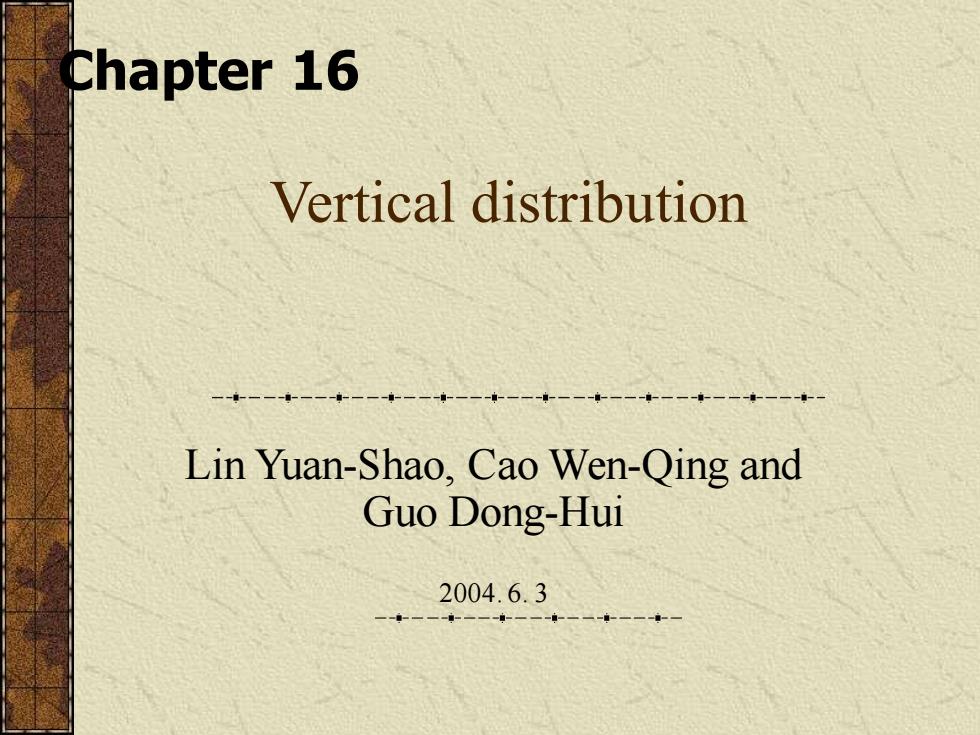
Vertical distribution Lin Yuan-Shao, Cao Wen-Qing and Guo Dong-Hui 2004. 6. 3 Chapter 16
Vertical distribution Lin Yuan-Shao, Cao Wen-Qing and Guo Dong-Hui 2004. 6. 3 Chapter 16
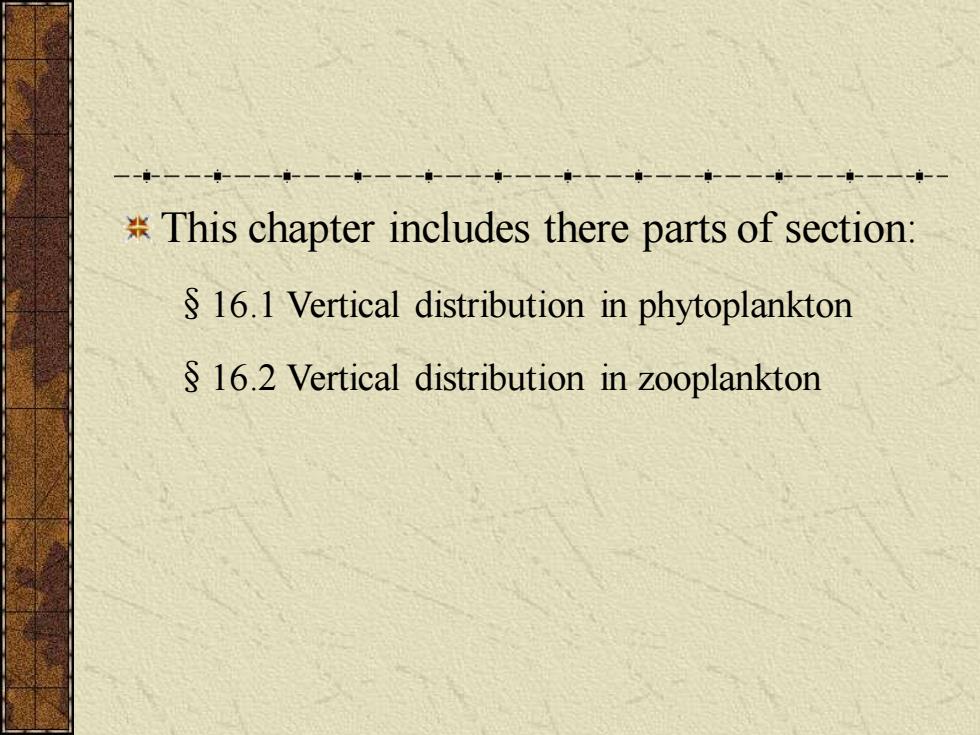
This chapter includes there parts of section: §16.1 Vertical distribution in phytoplankton §16.2 Vertical distribution in zooplankton
This chapter includes there parts of section: §16.1 Vertical distribution in phytoplankton §16.2 Vertical distribution in zooplankton

Vertical distribution in phytoplankton Studies on the different layers of water shows much variation in the distribution of the phytoplankton and it becomes scarce in deep layers. Some examples on vertical distribution in phytoplankton are given bellow. §16.1
Vertical distribution in phytoplankton Studies on the different layers of water shows much variation in the distribution of the phytoplankton and it becomes scarce in deep layers. Some examples on vertical distribution in phytoplankton are given bellow. §16.1
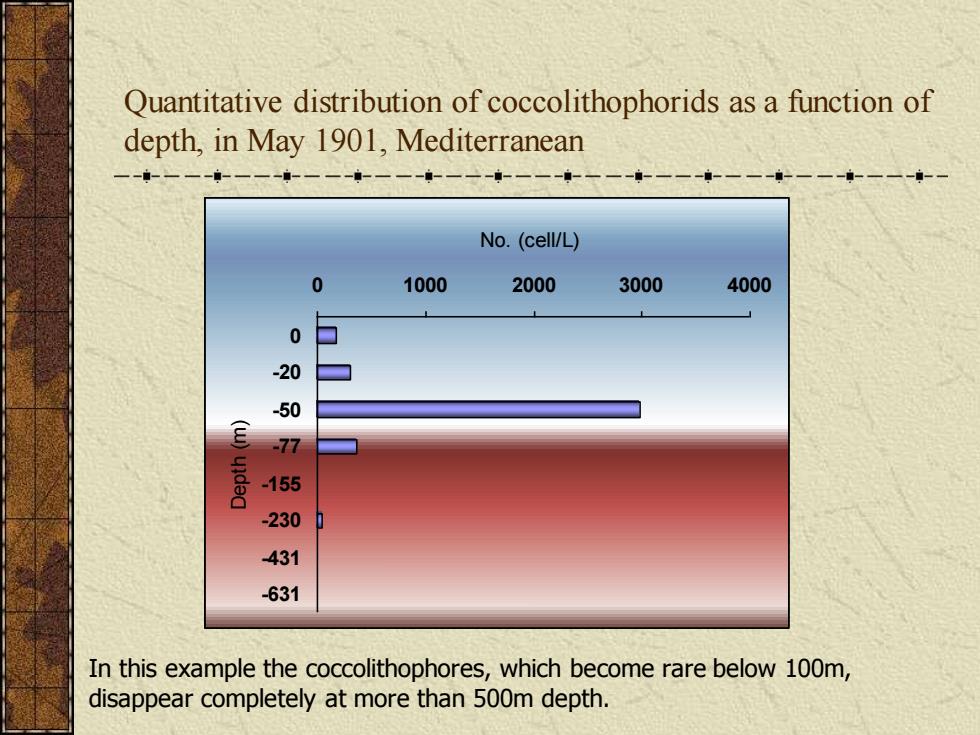
Quantitative distribution of coccolithophorids as a function of depth, in May 1901, Mediterranean No. (cell/L) 0 1000 2000 3000 4000 0 -20 -50 -77 -155 -230 -431 -631 Depth (m) In this example the coccolithophores, which become rare below 100m, disappear completely at more than 500m depth
Quantitative distribution of coccolithophorids as a function of depth, in May 1901, Mediterranean No. (cell/L) 0 1000 2000 3000 4000 0 -20 -50 -77 -155 -230 -431 -631 Depth (m) In this example the coccolithophores, which become rare below 100m, disappear completely at more than 500m depth
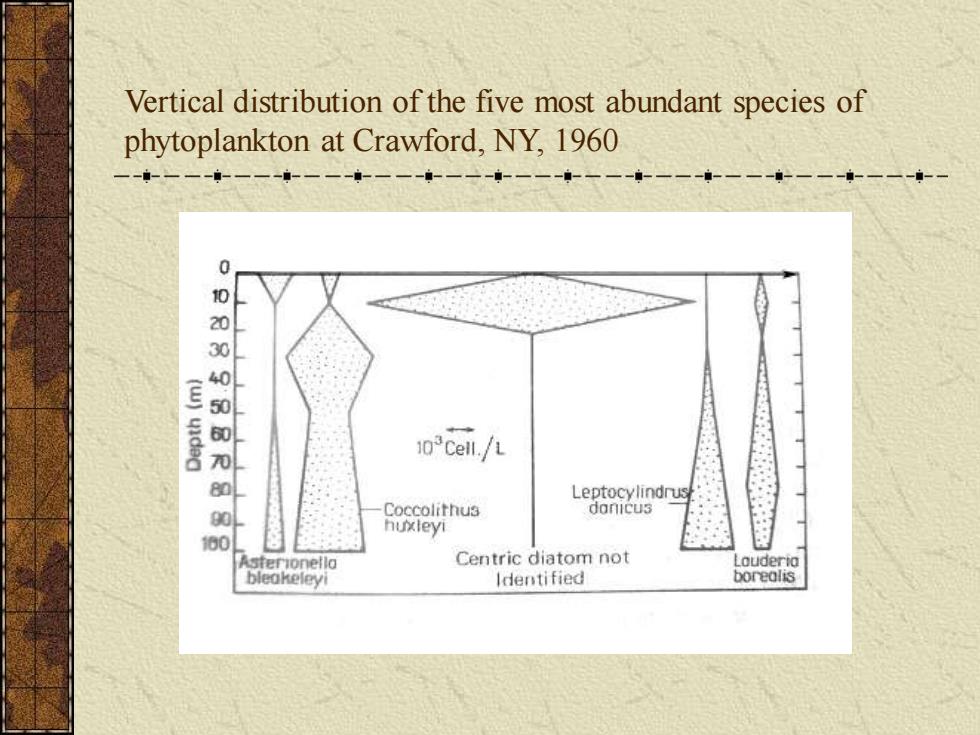
Vertical distribution of the five most abundant species of phytoplankton at Crawford, NY, 1960
Vertical distribution of the five most abundant species of phytoplankton at Crawford, NY, 1960

Vertical distribution of chlorophyll a (shaded) and density (dashed) of phaeophytin in Japan ,132oE)
Vertical distribution of chlorophyll a (shaded) and density (dashed) of phaeophytin in Japan ,132oE)

多 春 夏 0 50505 日本海浮游植物垂直分布的季节变化
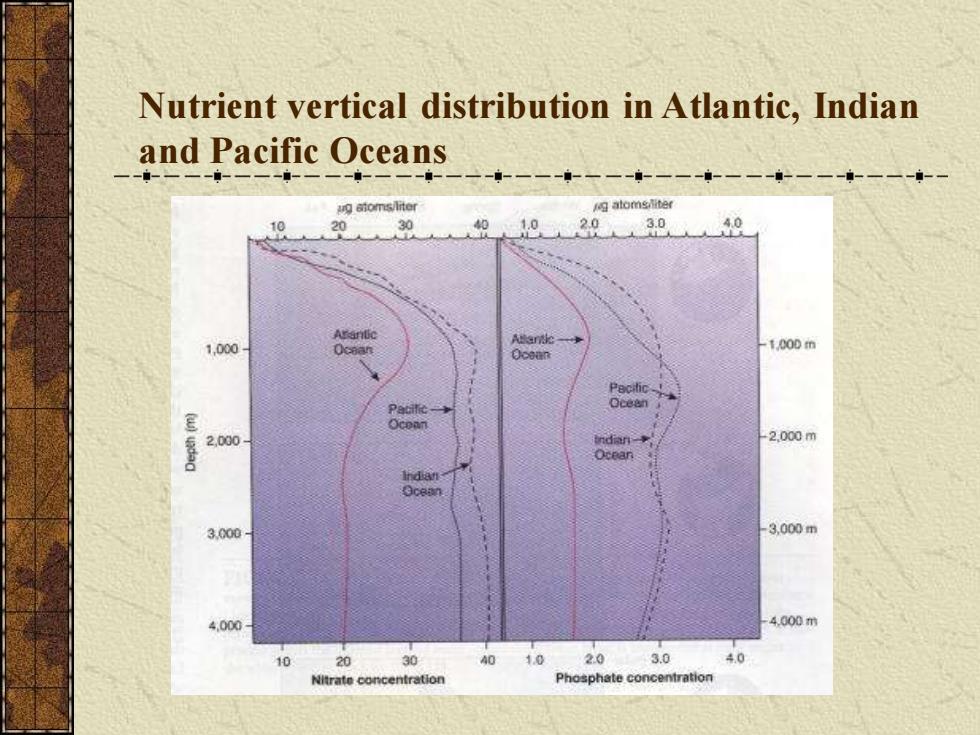
Nutrient vertical distribution in Atlantic, Indian and Pacific Oceans
Nutrient vertical distribution in Atlantic, Indian and Pacific Oceans

From the examples above, we can see: phytoplankton must have adequate light for photosynthesis and can develop only in the upper layers (photic zone). Phytoplankton is not most abundant in the superficial water, where light intensity is greatest. Many of the phytoplanktonic organisms, particularly diatoms cannot move independently and so tend to sink. Those with a high density will, therefore, remain below the level of high production. Photosynthesis requires an optimal light intensity. The light intensity at superficial layer may have strongly light, and UV (ultra-violet) may damage some biological molecules and affect the process of photosynthesis
From the examples above, we can see: phytoplankton must have adequate light for photosynthesis and can develop only in the upper layers (photic zone). Phytoplankton is not most abundant in the superficial water, where light intensity is greatest. Many of the phytoplanktonic organisms, particularly diatoms cannot move independently and so tend to sink. Those with a high density will, therefore, remain below the level of high production. Photosynthesis requires an optimal light intensity. The light intensity at superficial layer may have strongly light, and UV (ultra-violet) may damage some biological molecules and affect the process of photosynthesis

Vertical distribution in zooplankton The distribution of the Euphausiacea in the North Atlantic sets an excellent example of vertical distribution in zooplankton. § 16.2
Vertical distribution in zooplankton The distribution of the Euphausiacea in the North Atlantic sets an excellent example of vertical distribution in zooplankton. § 16.2